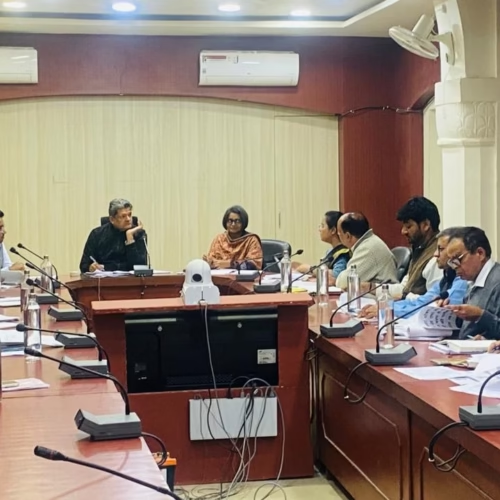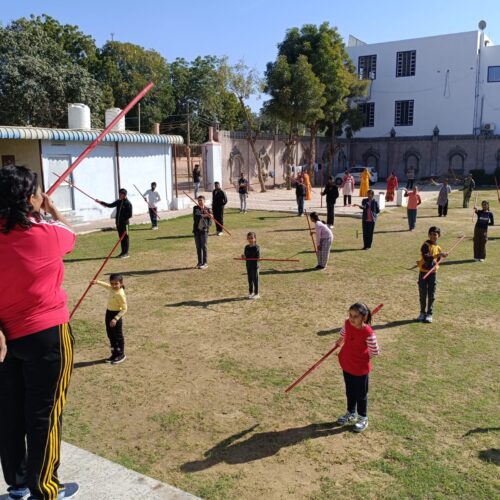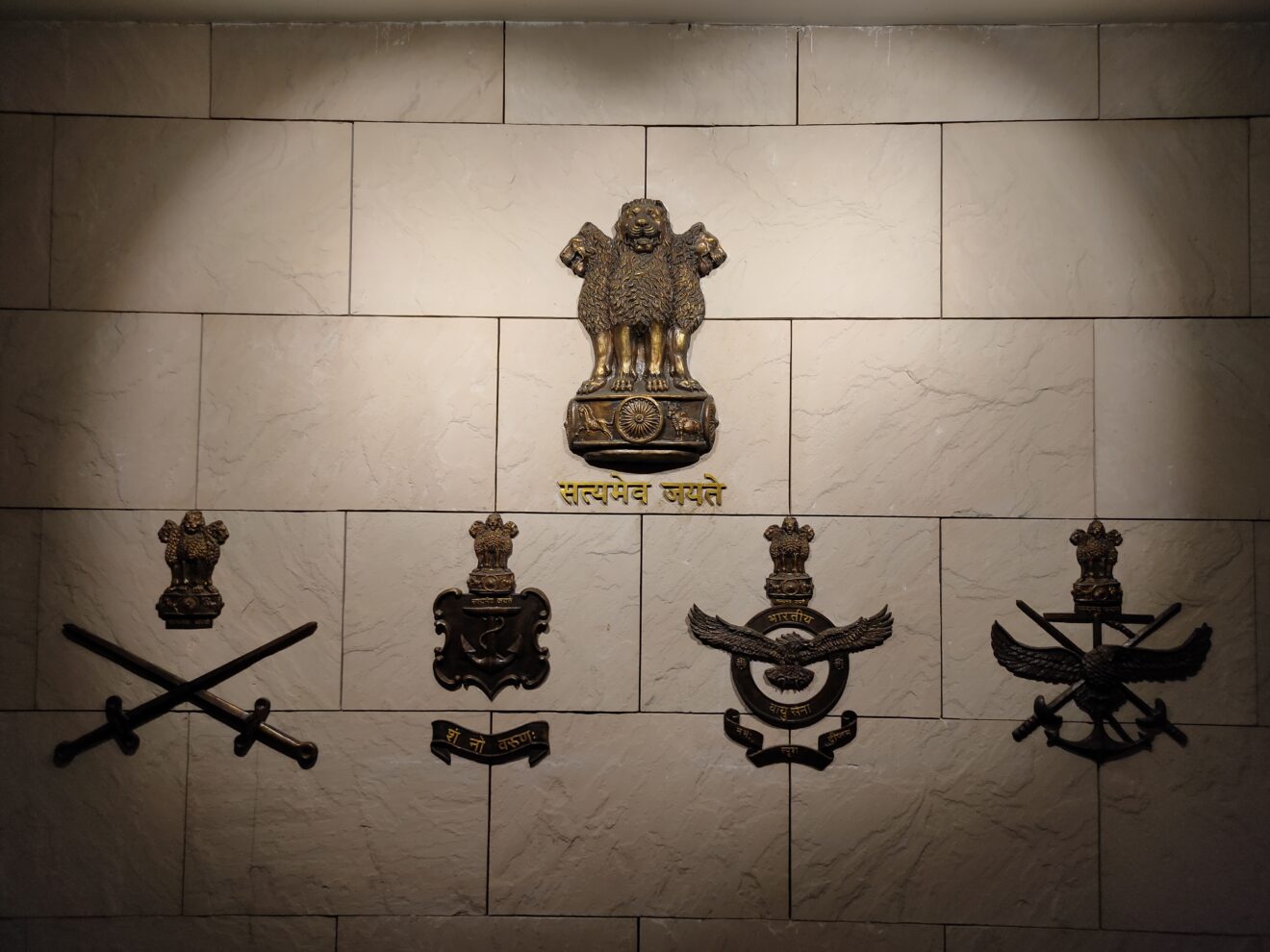BY DEFENCE JOURNALIST SAHIL | T.I.N. NETWORK
Worry for India as ISKP and LeT Join Hands — Intelligence Flags Pakistan’s New Terror Syndicate
New Delhi, October 2025 — A major security alarm has been triggered within Indian intelligence circles after new classified assessments confirmed operational-level collaboration between two of the region’s most dangerous terror outfits — Islamic State Khorasan Province (ISKP) and Lashkar-e-Taiba (LeT). What was once considered a mere ideological overlap has now evolved into an active partnership — brokered, facilitated, and monitored by Pakistan’s Inter-Services Intelligence (ISI).
A recently surfaced photograph has deepened concerns: it shows Mir Shafiq Mengal, ISKP’s Balochistan coordinator, gifting a pistol to Rana Mohammad Ashfaq, a Lashkar-e-Taiba commander. The image, intelligence sources confirm, was taken in the Mastung district of Balochistan, long known as a hub for extremist training camps and weapons smuggling routes.
The symbolism of that pistol, sources say, goes far beyond camaraderie. It marks a ceremonial unification between two terror networks that are now believed to be coordinating logistics, propaganda, and recruitment — all under the strategic oversight of Pakistan’s intelligence establishment.
ISI’s New Gameplan: Repurposing ISKP
According to the intelligence dossier reviewed by T.I.N. Network, ISI’s new counterplay is to repurpose ISKP for multiple objectives. The first: to neutralize Baloch separatists, who continue to challenge Pakistan’s control over the mineral-rich and geopolitically sensitive province of Balochistan. The second: to strike uncooperative Taliban factions in Afghanistan who refuse to align with Pakistan’s geopolitical interests.
But what alarms India most is the third and final layer of this plan — a renewed push to destabilize Jammu & Kashmir through proxy militancy, using ISKP’s international networks and Lashkar’s established ground infrastructure.
The report indicates that ISKP has been directed to “expand operational theatres” into Kashmir, leveraging radical online propaganda and sleeper networks within the region. Pakistan’s ISI, analysts say, is using ISKP as a plausible-deniability cover — enabling Islamabad to deflect international scrutiny while reviving cross-border terror activities under a new, transnational jihadist label.
The Photo That Confirmed Collaboration
The now-viral photo of Mir Shafiq Mengal and Rana Mohammad Ashfaq — both high-value terror operatives — is seen as a turning point in intelligence tracking. Mengal, once part of the anti-Baloch death squads allegedly backed by ISI, has transformed into one of ISKP’s most resourceful commanders in Pakistan.
He has been managing safe houses, weapons transfers, and fund distribution for ISKP’s operational wings in Mastung and Khuzdar — two districts that remain flashpoints of insurgency and sectarian extremism.
On the other hand, Rana Mohammad Ashfaq, described as a senior LeT operative by intelligence agencies, has reportedly been tasked with coordinating new terror hubs across Pakistan’s western borderlands, including in Quetta, Hub, and Turbat. His network has extended to liaising with smaller extremist factions, effectively building a coalition of jihadist elements with shared logistics and ideological support.
A Long Trail of Cooperation
The ISKP-LeT partnership is not an isolated phenomenon. History reveals repeated instances of jihadist crossovers facilitated by Pakistan’s deep state.
By 2018, ISKP had already established significant presence in Mastung and Khuzdar, operating under the indirect patronage of ISI. Intelligence tracking had confirmed that Mir Shafiq Mengal played a central leadership role in these camps, which served dual purposes — targeting Baloch insurgents and conducting cross-border raids into Afghanistan targeting anti-Pakistan Taliban elements.
LeT’s roots in Balochistan run deeper. Between 2002 and 2009, Lashkar operated a full-fledged training facility in Quetta, which was used to train foreign jihadists and Indian-origin militants. Among them was Yasin Bhatkal, the co-founder of the Indian Mujahideen, who reportedly trained in the camp in 2006 before executing multiple bombings across Indian cities.
Experts say the current ISKP-LeT collaboration is eerily similar to earlier patterns, especially LeT’s cooperation with Al-Qaeda during the Afghan jihad era. Both groups have historically adapted to shifting political and military realities, rebranding themselves while continuing operations under the shadow of ISI’s intelligence protection.
India’s Growing Concern: Kashmir in the Crosshairs
For New Delhi, the partnership signals a disturbing evolution in Pakistan’s terror architecture. While groups like Jaish-e-Mohammed (JeM) and LeT have been traditional instruments of anti-India operations, ISKP adds a new dimension — international legitimacy for violence under the banner of the “Islamic State”.
According to an intelligence report, ISKP’s propaganda magazine “Yalgaar” has recently featured maps of Kashmir, referring to it as the “next front” of jihad. The magazine, which circulates digitally in Urdu, Pashto, and Dari, has been aggressively pushing narratives about “oppression” and “martyrdom in India”.
The report explicitly states that “this emerging coalition of extremist entities not only intensifies the threat to Afghanistan but also signals Pakistan Army’s intent to reignite militancy in Jammu & Kashmir — destabilizing regional peace under the guise of plausible deniability.”
This convergence of objectives — from targeting the Taliban to launching attacks in Kashmir — underscores Pakistan’s shifting hybrid warfare model: use local proxies for domestic control, and transnational jihadists for regional leverage.
Indian Security Agencies on Alert
India’s intelligence community has reportedly enhanced its monitoring of digital jihadist chatter, especially Telegram and dark web channels associated with ISKP and LeT propaganda.
The National Investigation Agency (NIA) and Research and Analysis Wing (R&AW) are believed to be coordinating closely with Afghan and Western counterparts to trace ISKP’s network of recruiters who operate under aliases to target vulnerable youth in India’s border states.
Senior defence analysts suggest that this collaboration also complicates counter-terror operations, as ISKP’s decentralized cells and LeT’s structured command create a hybrid threat ecosystem — capable of both organized strikes and lone-wolf attacks.
Pakistan’s Double Game
Analysts say the timing of ISKP’s reactivation is no coincidence. With increasing global scrutiny over Pakistan’s direct sponsorship of LeT and JeM, ISI appears to be outsourcing terrorism to less traceable networks like ISKP, giving Islamabad the benefit of deniability while sustaining militant pressure on multiple fronts.
This tactic, often described as “proxy recycling”, allows Pakistan to simultaneously target Baloch insurgents, Afghan resistance groups, and Indian interests — without directly engaging militarily or politically.
The international community’s focus on Gaza, Ukraine, and Taiwan has also created a strategic vacuum, which Pakistan seems to be exploiting to reset its terror operations under new banners and alliances.
Implications for Regional Stability
The growing ISKP-LeT nexus poses a severe challenge not only to India but also to Afghanistan, Iran, and the Central Asian states. The alliance effectively blurs the line between sectarian militancy and transnational jihad, creating overlapping threat zones that could spill into new regions.
For India, the immediate concern remains the revival of insurgency patterns in Jammu & Kashmir, potentially aided by ISKP’s digital networks and ideological radicalization pipelines.
Security experts warn that this collaboration could also lead to joint attacks targeting Indian interests abroad — especially in South-East Asia, Africa, or West Asia — where both groups have been known to operate cells.
Conclusion: The New Axis of Instability
As India prepares to counter an increasingly sophisticated web of terrorism emerging from Pakistan’s western frontier, the ISKP-LeT collaboration stands as a stark reminder of how rapidly the regional security landscape is mutating.
It is no longer just about Kashmir or Balochistan — it is about a global jihadist ecosystem being revived and recycled under Pakistan’s watchful eye.
The photograph of Mir Shafiq Mengal handing over that pistol to Rana Mohammad Ashfaq will likely be remembered as the moment the world witnessed the merging of two terror generations — one born from the Afghan jihad, and the other molded in the post-ISIS digital age.
Together, they represent not just a threat to India’s security, but to the fragile balance of peace across South Asia.
BY DEFENCE JOURNALIST SAHIL | T.I.N. NETWORK
भारत के लिए नई चिंता – आईएसकेपी और लश्कर-ए-तैयबा का गठजोड़, पाकिस्तान की नई आतंकी साज़िश का खुलासा
नई दिल्ली, अक्टूबर 2025 — भारतीय खुफिया एजेंसियों के लिए एक बड़ी चिंता का विषय तब उभरी जब यह पुष्टि हुई कि इस्लामिक स्टेट खुरासान प्रांत (ISKP) और लश्कर-ए-तैयबा (LeT) जैसे दो खतरनाक आतंकी संगठन अब ऑपरेशनल स्तर पर साथ काम कर रहे हैं। जो पहले केवल विचारधारात्मक समानता समझी जाती थी, वह अब पाकिस्तान की खुफिया एजेंसी आईएसआई की निगरानी में सक्रिय साझेदारी में बदल चुकी है।
हाल ही में सामने आई एक तस्वीर ने इन आशंकाओं को और गहरा कर दिया है — इस फोटो में आईएसकेपी के बलूचिस्तान कोऑर्डिनेटर मीर शफीक मेंगल को लश्कर-ए-तैयबा के कमांडर राणा मोहम्मद अशफाक को पिस्तौल भेंट करते देखा जा सकता है। यह तस्वीर बलूचिस्तान के मस्तुंग जिले की बताई जा रही है, जो लंबे समय से चरमपंथी प्रशिक्षण शिविरों और हथियारों की तस्करी का गढ़ माना जाता है।
विशेषज्ञों का कहना है कि इस पिस्तौल का प्रतीकात्मक महत्व गहरा है — यह दो आतंकी नेटवर्कों के बीच औपचारिक गठबंधन का संकेत है, जो अब लॉजिस्टिक्स, फंडिंग, प्रचार और भर्ती में मिलकर काम कर रहे हैं, और इस पूरे तंत्र की डोरें आईएसआई के हाथ में हैं।
आईएसआई की नई रणनीति – आईएसकेपी का पुनः उपयोग
खुफिया डोज़ियर के अनुसार, पाकिस्तान की आईएसआई ने आईएसकेपी को कई उद्देश्यों के लिए पुनः सक्रिय किया है।
पहला उद्देश्य — बलूच विद्रोहियों का सफाया करना, जो पाकिस्तान की सत्ता के खिलाफ खड़े हैं।
दूसरा उद्देश्य — अफगानिस्तान में असहयोगी तालिबान गुटों को निशाना बनाना।
और तीसरा, जो भारत के लिए सबसे चिंताजनक है — जम्मू-कश्मीर में फिर से उग्रवाद भड़काना, आईएसकेपी की अंतरराष्ट्रीय पहुंच और लश्कर के स्थानीय नेटवर्क को मिलाकर।
रिपोर्ट के अनुसार, आईएसआई ने आईएसकेपी को “भारत में अभियान विस्तार” का निर्देश दिया है, ताकि सोशल मीडिया प्रचार, ऑनलाइन कट्टरता और भूमिगत नेटवर्क के जरिये कश्मीर को पुनः अस्थिर किया जा सके। यह “प्लॉज़िबल डिनाएबिलिटी” (संदेह की गुंजाइश) की रणनीति है — जिससे पाकिस्तान प्रत्यक्ष रूप से शामिल दिखे बिना आतंक फैलाने का काम जारी रख सके।
वह तस्वीर जिसने सब कुछ उजागर किया
आईएसकेपी कमांडर मीर शफीक मेंगल और लश्कर सरगना राणा मोहम्मद अशफाक की सामने आई तस्वीर अब खुफिया एजेंसियों की नज़रों में एक निर्णायक सबूत बन गई है।
मीर शफीक मेंगल, जो पहले आईएसआई समर्थित एंटी-बलोच डेथ स्क्वॉड्स से जुड़ा था, अब आईएसकेपी के ऑपरेशनल नेटवर्क्स का प्रमुख बन चुका है। वह मस्तुंग और खुज़दार में सुरक्षित ठिकाने, फंडिंग चैनल और हथियार आपूर्ति की व्यवस्था संभाल रहा है।
वहीं, राणा मोहम्मद अशफाक को नए आतंकी ठिकाने स्थापित करने और विभिन्न चरमपंथी संगठनों से समन्वय करने की जिम्मेदारी दी गई है। उसका नेटवर्क क्वेटा, हब और तुर्बत तक फैला हुआ है।
पुराना पैटर्न, नई साज़िश
आईएसकेपी और लश्कर का यह गठजोड़ कोई नई बात नहीं है। इतिहास गवाह है कि पाकिस्तान की “डीप स्टेट” ने हमेशा अलग-अलग आतंकी संगठनों को जोड़कर अपने हित साधे हैं।
साल 2018 तक आईएसकेपी ने मस्तुंग और खुज़दार में आईएसआई के समर्थन से कई ठिकाने बना लिए थे। मीर शफीक मेंगल इन कैंपों का नेतृत्व करता था, जो बलूच विद्रोहियों के खिलाफ हमलों और अफगानिस्तान के अंदर क्रॉस-बॉर्डर अटैक के लिए इस्तेमाल किए जाते थे।
लश्कर-ए-तैयबा का बलूचिस्तान से जुड़ाव भी पुराना है। 2002 से 2009 के बीच क्वेटा में लश्कर का एक प्रशिक्षण शिविर संचालित था, जहां भारतीय आतंकी संगठन इंडियन मुजाहिदीन के संस्थापक यासिन भटकल ने 2006 में प्रशिक्षण प्राप्त किया था।
आज जो आईएसकेपी-लश्कर गठबंधन दिख रहा है, वह उसी दौर की याद दिलाता है — जब लश्कर ने अफगान जिहाद के दौरान अल-कायदा के साथ मिलकर काम किया था।
भारत के लिए खतरे की नई घंटी
भारतीय खुफिया एजेंसियों के लिए सबसे बड़ी चिंता यह है कि अब पाकिस्तान की नई रणनीति में आईएसकेपी का अंतरराष्ट्रीय चेहरा और लश्कर का स्थानीय नेटवर्क मिलकर काम कर रहे हैं।
खुफिया रिपोर्ट के मुताबिक, आईएसकेपी की प्रचार पत्रिका “यलगार” में हाल ही में कश्मीर के नक्शे प्रकाशित किए गए हैं और उसे “जिहाद का अगला मोर्चा” बताया गया है।
यह पत्रिका उर्दू, पश्तो और दारी भाषाओं में जारी होती है और भारत के खिलाफ “शहादत” और “प्रतिरोध” के संदेश फैलाती है।
रिपोर्ट में कहा गया है — “यह नया गठबंधन न केवल अफगानिस्तान के लिए बल्कि दक्षिण एशिया की शांति के लिए भी गंभीर खतरा है। पाकिस्तान सेना की मंशा जम्मू-कश्मीर में फिर से हिंसा भड़काने की है, ताकि क्षेत्रीय स्थिरता को अस्थिर किया जा सके।”
भारतीय एजेंसियां हुईं सतर्क
भारत की एजेंसियों ने अब डिजिटल जिहादिस्ट नेटवर्क्स पर निगरानी बढ़ा दी है। NIA और R&AW के अधिकारी ISKP और LeT से जुड़े Telegram चैनल और डार्क वेब खातों पर नज़र रख रहे हैं।
सूत्र बताते हैं कि इन संगठनों के रिक्रूटर्स अब भारत के सीमावर्ती राज्यों के युवाओं को निशाना बना रहे हैं।
सुरक्षा विशेषज्ञों का कहना है कि यह गठबंधन संकर खतरे (Hybrid Threat) का रूप ले चुका है — जिसमें संगठित आतंकी हमलों के साथ-साथ लोन वुल्फ अटैक की भी आशंका है।
पाकिस्तान की पुरानी चाल, नया रूप
विश्लेषकों का मानना है कि पाकिस्तान का यह कदम कोई संयोग नहीं है।
जब अंतरराष्ट्रीय समुदाय ने लश्कर और जैश जैसे संगठनों पर शिकंजा कसा, तब आईएसआई ने आईएसकेपी जैसे नामों का सहारा लेकर आतंकवाद को आउटसोर्स करना शुरू कर दिया।
इससे पाकिस्तान को दो फायदे मिलते हैं —
पहला, वह आतंक फैलाता रहता है लेकिन उसका नाम सीधे तौर पर सामने नहीं आता।
दूसरा, वह घरेलू मोर्चे पर बलूच और अफगान विद्रोहियों को भी दबाने के लिए इन्हीं नेटवर्कों का इस्तेमाल करता है।
दक्षिण एशिया में अस्थिरता की नई धुरी
आईएसकेपी और लश्कर का गठबंधन अब सिर्फ भारत के लिए नहीं बल्कि पूरे क्षेत्र के लिए खतरा बन चुका है।
अफगानिस्तान, ईरान और मध्य एशिया तक यह गठबंधन आतंक का फैलता जाल बन सकता है।
भारत के लिए सबसे बड़ा खतरा है कश्मीर में कट्टरता और भर्ती नेटवर्क का पुनर्जीवित होना।
साथ ही, विशेषज्ञों का कहना है कि इन संगठनों के गठबंधन से विदेशों में भारतीय हितों पर भी खतरा बढ़ सकता है — खासतौर पर दक्षिण-पूर्व एशिया और पश्चिम एशिया में।
आतंक का नया गठबंधन
भारत के सामने अब आतंकवाद की एक नई और जटिल चुनौती है —
एक तरफ पाकिस्तान की पुरानी रणनीति, दूसरी तरफ आईएसकेपी जैसे नए चेहरों का इस्तेमाल।
मीर शफीक मेंगल द्वारा राणा मोहम्मद अशफाक को पिस्तौल भेंट करने की वह तस्वीर अब दो पीढ़ियों के आतंकवाद के मिलन का प्रतीक बन गई है —
एक जो अफगान जिहाद से निकली थी, और दूसरी जो आईएसआईएस के डिजिटल युग में पली-बढ़ी।
यह गठबंधन न केवल भारत की सुरक्षा के लिए बल्कि दक्षिण एशिया की स्थिरता के लिए भी एक गंभीर खतरे का संकेत है।















Add Comment